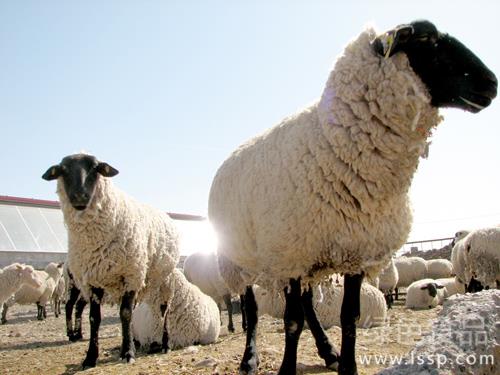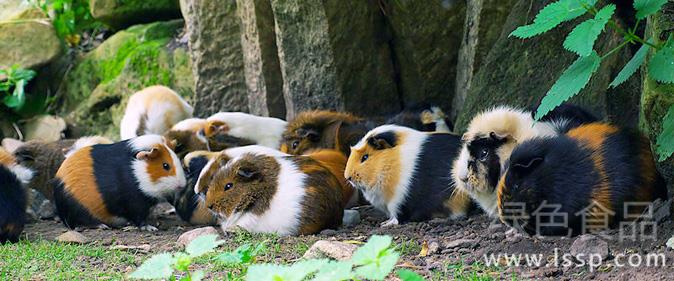Improving the scientific management skills of fattening mutton sheep by traditional feeding methods

Raising sheep
Sheep farming is an ancient and emerging breeding industry. The fattening of sheep is to obtain good quality and large quantity of mutton at low cost in a short period of time. How to improve the traditional feeding methods to make sheep fattening quickly is an urgent problem for modern sheep breeders.
1. Select improved varieties
Choose the best hybrid combination sheep and make full use of the heterosis to increase yield. For example, using Boer goat as male parent and local white goat as female parent, the cultivated meat goat has the characteristics of large size, stable genetic performance, high reproductive performance, strong disease resistance, high meat production rate, white wool, good luster, good elasticity and so on.
2. Build an enclosure
The construction of the mutton sheep enclosure should be warm in winter and cool in summer, and should be built in a place with high terrain, dry ground, good drainage and ventilation, clean and sanitary, with a half-slope type, with a general rear wall of 1.8 meters and a front eaves of 2.2 meters, and an external sports ground to create a good living environment for fattening sheep.
3. Raising ewes
Ewes should graze on high-quality pastures or mountain pastures, or feed them to high-quality forage grass. At the same time, each ewe was fed 0.4 kg to 0.7 kg mixed concentrate every day. The composition of mixed concentrate feed: corn 60%, wheat bran 8%, cottonseed cake 16%, soybean meal 12%, salt 1%, calcium hydrogen phosphate 3%.
4. Select lambs for fattening
The lambs with large size, good development, strong feeding ability and disease-free were selected from the lamb flock to form the fattening group after weaning. It is best to choose male lambs because they grow fast and do not reach sexual maturity at this time.
5. Supplementary feeding of lambs
Cereal feed can be used with appropriate amount of soybean cake (meal), or mixed concentrate feed can be used, such as 45% corn, 22% wheat bran, 30% soybean meal, 1% salt and 2% fish meal. The amount of concentrate feed of lambs increased with the increase of age. At the age of 20-30 days, the feeding amount of each lamb was 50-70 grams, 100-150 grams at 1-2 months old, and 200 grams at 2-3 months old, twice a day.
6. cut off the tail at the right time
Lamb tail amputation can accelerate the growth of mutton sheep, improve meat quality and reduce the taste of meat. The tail of lambs can be cut off at 2-21 days old, but the most suitable age is 2-7 days old. Tail severing is best done in the morning on a sunny day. Method: one is to break the tail of gluing. The elastic rubber tendons were placed between the second and third caudal vertebrae of the lambs, so that the lower part of the tail could not get nutrition and atrophied, and the second was to cut off the tail with a quick knife after 10 days. First tie the tail root with a string to cut off the blood flow, then cut it off 4cm away from the tail with a sharp knife and wrap it with gauze. In the afternoon, the tie can be untied and cured after 5 to 7 days.
7. Castration to promote growth
Castration of male lambs is generally carried out at the same time as tail amputation, and glue bar method and operation method can be used. The commonly used gluing method is to squeeze the testicles of 7-day-old lambs into the scrotum and tightly entangle the spermatic cord with glued tendons in the scrotum. After 20-30 days, the scrotum and testicles will dry up and fall off naturally.
8. Disinfection in time
In the feeding and management of mutton sheep, there should always be adequate and clean drinking water supply, the house is well ventilated, the ground is dry, bedding grass is laid, and the feed is not polluted. Frequently clean and disinfect the sheepfold, sheepshed, material trough and sink; put the mat grass, forage grass and utensils for lambing in the sun frequently; boil and disinfect the overalls and medical instruments frequently.
9. Prevention of diseases
According to the epidemic characteristics of local sheep disease, adhere to the feeding principle of "prevention is more important than treatment", and carry out drug prevention and immunization to sheep in a planned way to prevent the occurrence of infectious and parasitic diseases.
10. Choose the time to enter the hurdles
When the fattening sheep is full and strong, the fattening sheep can be fattened in time according to the market situation, which can not only shorten the fattening period of mutton sheep, but also improve the economic benefits of sheep farmers.
- Prev

Method of administration to sick dogs
Most of the drugs used to treat dog diseases are administered orally. There are many ways to administer drugs to dogs, and the use should be selected according to the dosage form, dosage and condition of the drug. tablet, pill and ointment administration dog sit properly restrained, that administer crosses the bridge of the dog's nose with the palm of his left hand, opens the mouth with the thumb and index finger (or middle finger) respectively from the two corners of the mouth, or wraps the skin on both sides of the upper palate around the upper dentition to open the mouth, then places the tablet or pill on the root of the tongue, or applies the plaster on the root of the tongue with a bamboo stick, releases the left hand, and holds it with the right hand
- Next

Introduction to guinea pig breeding technology: low cost and low technical difficulty
Introduction to guinea pig breeding technology: low cost and low technical difficulty
Related
- On the eggshell is a badge full of pride. British Poultry Egg Market and Consumer observation
- British study: 72% of Britons are willing to buy native eggs raised by insects
- Guidelines for friendly egg production revised the increase of space in chicken sheds can not be forced to change feathers and lay eggs.
- Risk of delay in customs clearance Australia suspends lobster exports to China
- Pig semen-the Vector of virus Transmission (4)
- Pig semen-the Vector of virus Transmission (3)
- Five common causes of difficult control of classical swine fever in clinic and their countermeasures
- Foot-and-mouth disease is the most effective way to prevent it!
- PED is the number one killer of piglets and has to be guarded against in autumn and winter.
- What is "yellow fat pig"? Have you ever heard the pig collector talk about "yellow fat pig"?

